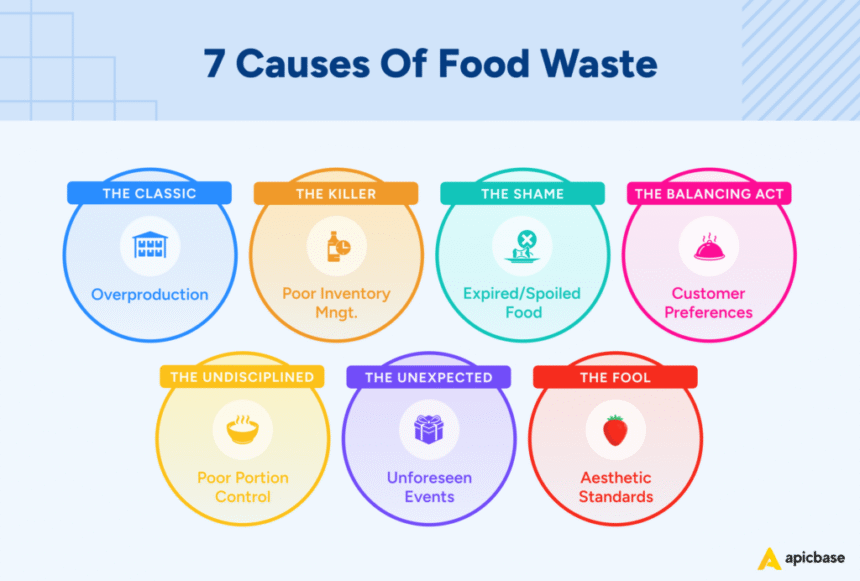Food waste is one of the biggest and most costly challenges faced by restaurants, cafés, and catering businesses. Spoiled ingredients don’t just eat into profits, they also harm sustainability goals and can even impact food safety. One of the most common yet overlooked causes of waste is poor stock rotation. Without a clear system for managing how ingredients are stored and used, even well-managed kitchens can find themselves throwing away food that should never have expired in the first place.
A well-designed food inventory management software can make a significant difference by automating and streamlining stock rotation. Instead of relying on memory or handwritten notes, teams can use real-time data to track what’s in storage, when it arrived, and when it should be used. This approach ensures older stock is always used first, while new deliveries are properly integrated into the rotation process. The result is not only less waste, but also more consistent food quality and improved cost control.
Understand the Importance of FIFO
The “first in, first out” (FIFO) method is the foundation of good stock rotation. It means using the oldest stock first so that nothing sits too long in storage. Implementing FIFO involves clearly labelling items with delivery dates, storing newer stock behind older items, and ensuring staff are trained to follow this method consistently. While simple in theory, FIFO can be difficult to maintain in a busy kitchen without proper organisation and oversight.
Using software tools to track expiry dates and flag soon-to-expire items helps ensure FIFO is followed accurately. With automatic alerts and visual dashboards, kitchen managers can make quick decisions about what needs to be used immediately or discounted in daily specials before it goes to waste.
Train Your Staff Consistently
Even the best system will fail if the people using it aren’t properly trained. Every team member, from chefs to stock handlers, needs to understand why stock rotation matters and how to follow the established process. Training should cover how to label items, how to store different food types correctly, and how to identify products that are approaching their use-by dates.
It’s also important to maintain regular refresher sessions. Over time, small lapses can lead to big mistakes. Consistent training ensures everyone remains aligned with your rotation policies and helps build a culture of accountability in the kitchen.
Keep Storage Areas Organised
An organised storage area is essential for effective rotation. Shelves should be clearly labelled, and products should be arranged by category and date. Avoid overstocking, as crowded shelves can lead to items being pushed to the back and forgotten. Good lighting and regular cleaning also make it easier to spot food that’s nearing expiry.
If your kitchen manages both dry goods and perishable stock, consider separate areas or colour-coded systems to keep things orderly. A clear layout reduces confusion and speeds up the process of locating items during service, especially during busy periods.
Use Technology to Automate the Process
Technology can take much of the manual effort out of stock rotation. Food inventory management software can automatically record incoming deliveries, assign expiry dates, and update stock levels as items are used. These systems can generate daily or weekly reports highlighting which items should be prioritised for use, reducing the risk of spoilage.
Some platforms also integrate with purchasing systems, helping managers order only what’s needed and avoid overstocking. This connection between procurement and storage provides better visibility across the entire supply chain and helps businesses make smarter, data-driven decisions.
Review and Adjust Regularly
Stock rotation isn’t a one-time setup. Regular reviews are necessary to identify gaps or inefficiencies in your process. Schedule audits to check if FIFO is being followed correctly, and use data from your inventory system to spot recurring issues. For example, if certain items often expire before use, you may need to adjust order quantities or supplier schedules.
Encouraging feedback from staff can also help refine the system. Those who handle ingredients daily often have valuable insights into what’s working and what’s not.
Preventing food waste starts with smart stock management. By combining proper training, an organised storage system, and reliable food inventory management software, restaurants can drastically cut waste while saving money and improving sustainability. A proactive approach to stock rotation ensures ingredients stay fresh, operations run smoothly, and your business stays both efficient and environmentally responsible.







